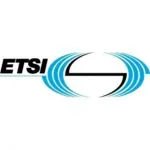

The ETSI Technical Committee on Cybersecurity (TC CYBER) unveils ETSI EN 303 645, a standard for cybersecurity in the Internet of things that establishes a security baseline for internet-connected consumer products and provides a basis for future IoT certification schemes(CE certification).
The document specifies high-level security and data protection provisions for consumer IoT devices that are connected to network infrastructure (such as the Internet or home network) and their interactions with associated services. The associated services are out of scope.
A non-exhaustive list of examples of consumer IoT devices includes:
• Connected children’s toys and baby monitors
• Connected smoke detectors, door locks, and window sensors
• IoT gateways, base stations, and hubs to which multiple devices connect
• Smart cameras, TVs and speakers
• Wearable health trackers
• Connected home automation and alarm systems, especially their gateways and hubs
• Connected appliances, such as washing machines and fridges and Smart home assistants.
The document addresses security considerations specific to constrained devices. For example: Window contact sensors, flood sensors, and energy switches are typically constrained devices. The present document provides basic guidance through examples and explanatory text for organizations involved in the development and manufacturing of consumer IoT on how to implement those provisions. Table B.1 provides a schema for the reader to give information about the implementation of the provisions.
Devices that are not consumer IoT devices, for example, those that are primarily intended to be used in manufacturing, healthcare, or other industrial applications, are not in the scope of the present document. The document has been developed primarily to help protect consumers, however, other users of consumer IoT equally benefit from the implementation of the provisions set out here.
As more devices in the home connect to the internet, the cybersecurity of the Internet of Things (IoT) has become a growing concern. The EN is designed to prevent large-scale, prevalent attacks against smart devices that cybersecurity experts see every day.
Compliance with the standard will restrict the ability of attackers to control devices across the globe – known as botnets – to launch DDoS attacks, mine cryptocurrency, and spy on users in their own homes. By preventing these attacks, the EN (CE certification) represents a huge uplift in baseline security and privacy.
Based on information from ETSI website.
360Compliance provides Testing & Certification for type approval services and global market access in 195 countries. With proven expertise in worldwide regulations, 360Compliance can help your company shorten time to any market, minimize risks and manage the regulatory process from A-Z.
Contact us at contact@360compliance.co
You may also be interested





